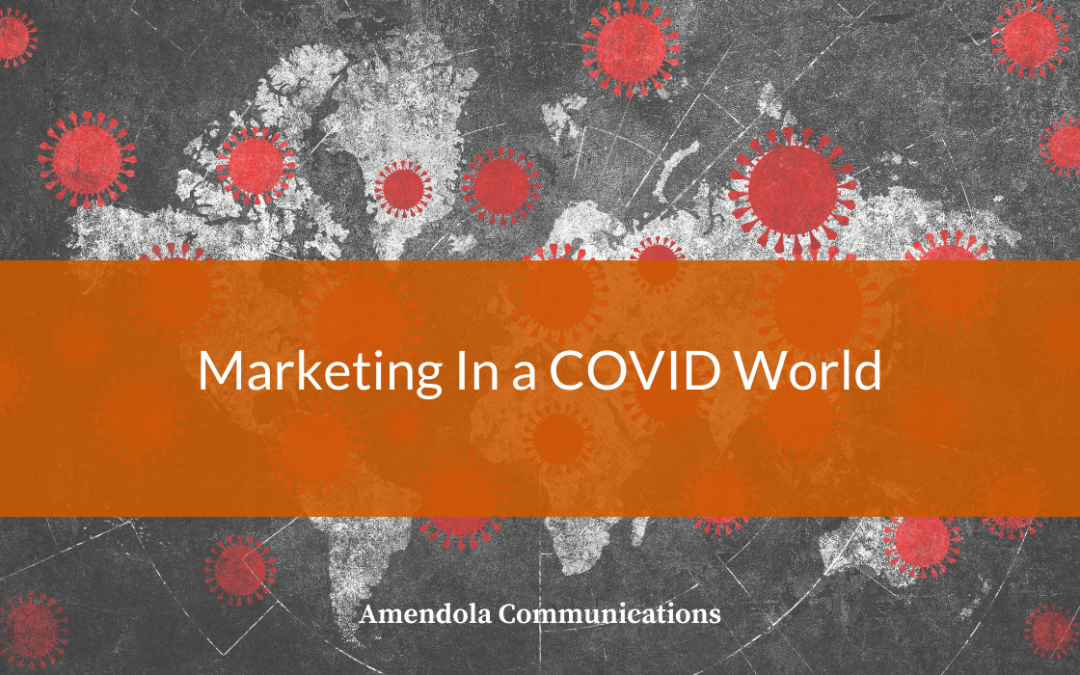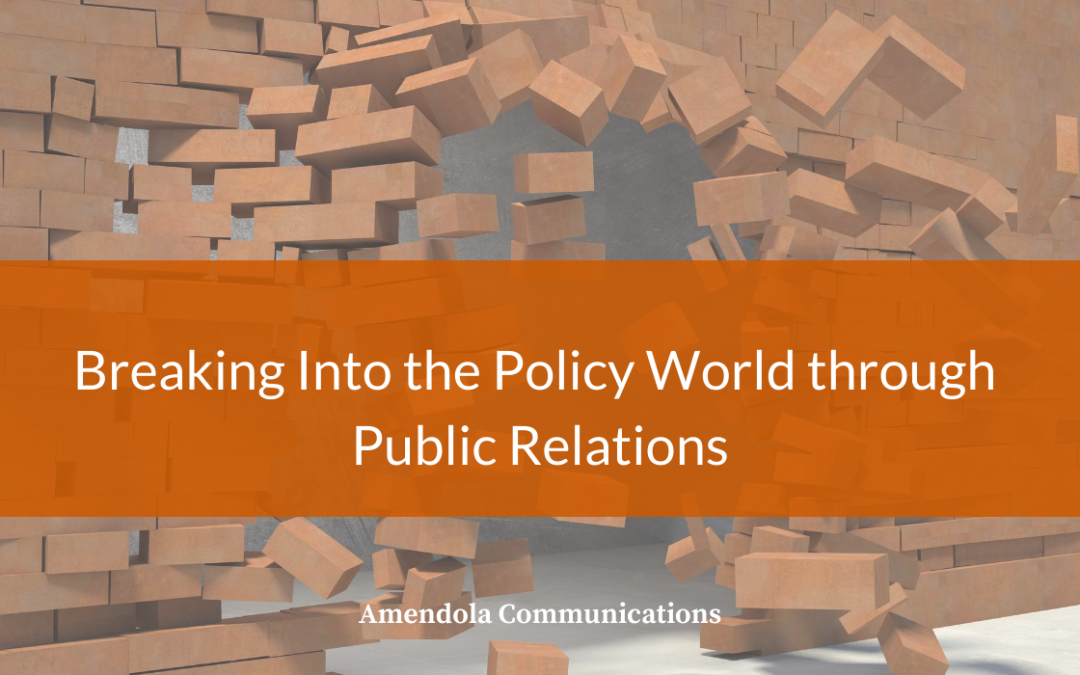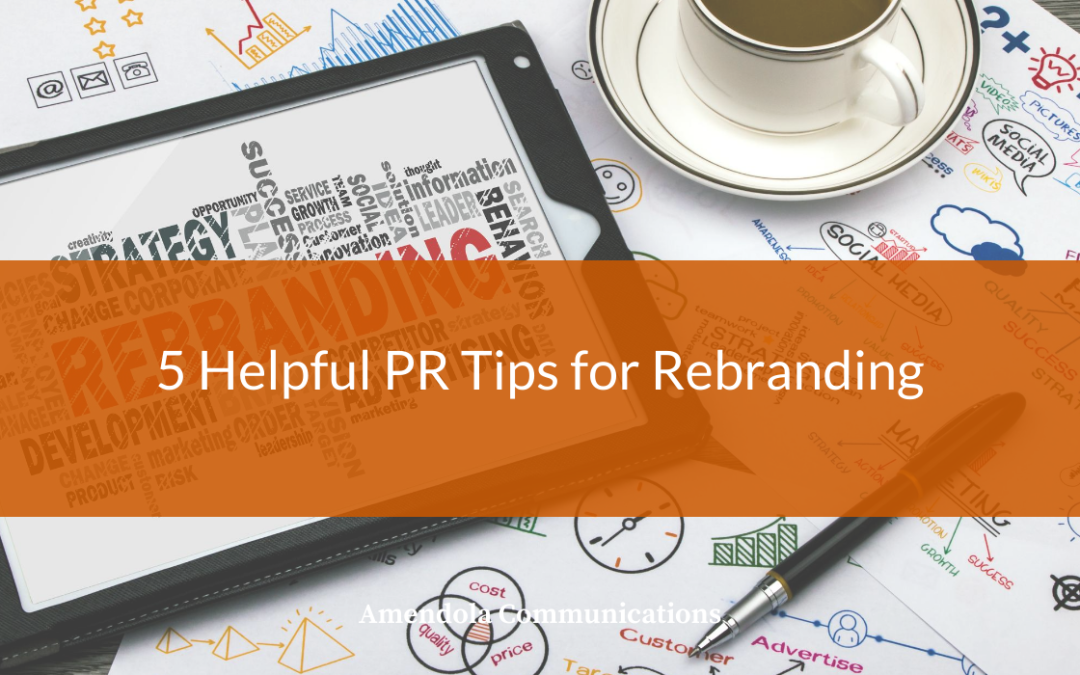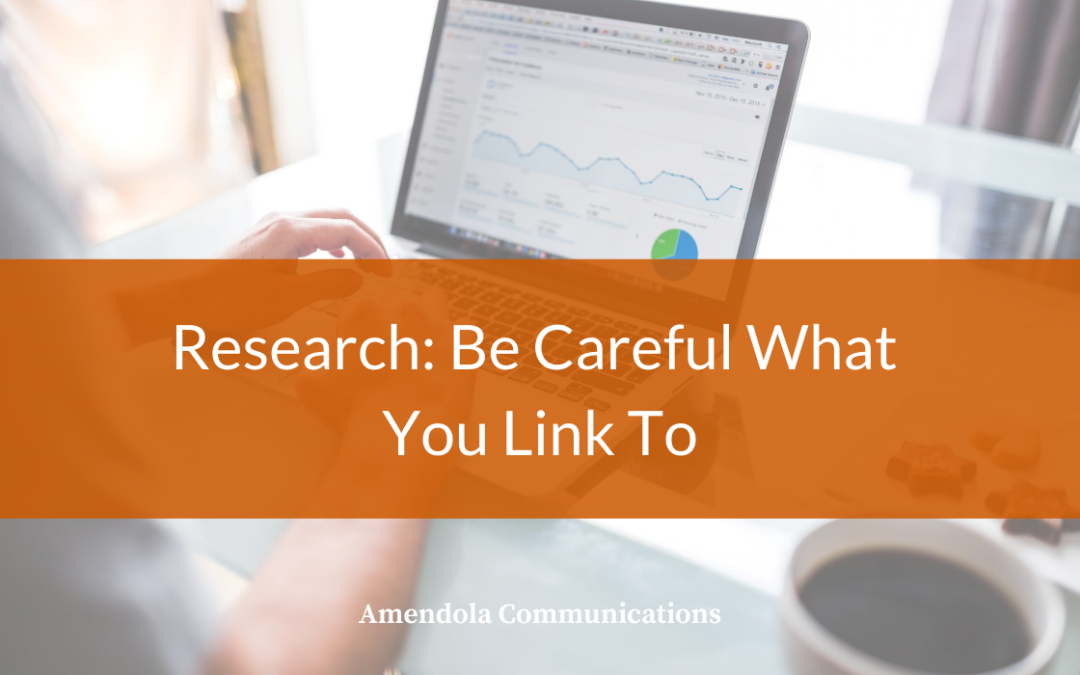
by Ken Krause | Sep 16, 2020 | Blog
Whenever I get award entries (or PR proposals for that matter) to review, I am always struck at how much confusion there is between what constitutes a strategy versus a tactic.
Generally what I will find is that the strategies and tactics are mixed together in some sort of strange PR stew that is like covering seasoned beef with strawberry jam. Both are tasty on their own, but together they just don’t quite work.
This confusion becomes more evident on entry forms that ask for deeper details. If all the competition is asking for is some company details and 300-word description of why whatever you did is award-worthy you don’t have to spend a lot of time separating strategy and tactics.
If, however, the entry form asks for 500 words on strategies around the objectives, then another 500 words on the tactics/execution you used to achieve the objectives, well, you’re going to need to understand the difference. Or find someone who does. Or hope the judges don’t understand it any better than you do.
Basically, the strategy is the overall plan of action – the big picture of what you intend to do. The tactics are the actions you take to get it done.
In baseball, for example, the strategy in a close game might be to advance a runner on first into scoring position (i.e., second or third base for those not familiar with baseball lingo). Doing so will give you a heightened opportunity to add a run to your total (at least in theory; SABRmetrics has shattered a lot of those beliefs in recent years).
HOW you advance that runner is where the tactics come in. You could lay down a sacrifice bunt. You could have the hitter try to bunt for a hit. You could do a hit-and-run, where the runner on first takes off for second and the hitter tries to hit the ball behind him to the right side. You could have the runner on first steal second while the hitter covers him with a swing and miss.
All of those are valid tactics or ways of getting the runner to second. Which you use depends on your personnel and a whole bunch of other factors.
Now let’s talk about PR award entries and why it seems so difficult to tell the two apart. Let’s say one objective of the program is:
“Company A was losing sales to larger competitors, so it needed to create a larger-than-life image to overcome this hurdle.”
How did they plan to do that? The strategy was to use PR to increase its visibility in the marketplace without the huge investment advertising would require. But here’s where it starts to go wrong.
The next sentence in the “strategy” section will talk about how Company A started issuing press releases and thought leadership pieces on a regular basis.
No, those are tactics. They required specific actions from Company A or its agency. The same is true with launching a media relations or analyst relations program. Those, again, are actions the company took.
Again, strategy defines what needs to be done on a broad scale – in other words a business issue. Tactics describe the steps you will take/are taking/have taken to accomplish the strategy.
Here are a few more quick examples that will help stratify the three areas – goals/objectives, strategy and tactics – in your award entries and other materials:
Goals/Objectives
- Increase share of voice
- Improve company reputation
- Establish new market
- Attract funding
- Position for sale
Strategies
- Create a thought leadership program
- Engage subject matter experts (SMEs) in developing content
- Improve understanding of what media outlets clients/prospects rely on
- Gain a better understanding of what product features/benefits are important to customers/prospects
- Make messaging more concise/easier to understand
Tactics
- Issue X number of press releases for the year
- Write byline articles on these specific topics
- Develop a media list
- Media-train SMEs and other company spokespeople
- Apply for awards/speaker opportunities
The beauty of understanding the differences is that award entries then practically write themselves. They tell the story of how you started broadly, then worked your way through the process to achieve the results.
Taking that little bit of extra time to think through what is a strategy versus a tactic isn’t always easy. But it’s worth the effort – especially when you receive that happy notification that you’ve won the award you were targeting.

by Stacy State | Sep 9, 2020 | Blog
In mid-May we talked about the emergence of a new normal in public relations and marketing as a result of the COVID-19 pandemic. Media coverage of the virus has become all-consuming in the intervening four months.
Over 100 million pieces of news focused on COVID-19 have appeared. In just one sampled day, 340,000 came from 30,000 media outlets. As the lingering epicenter of the crisis, the United States produces one third of all global daily coverage.
Even as pandemic fatigue sets in among the American population, our collective obsession with the virus and its toll never wavers. Potential vaccines linger on the horizon bringing hope. However, even aggressive projections place their availability 5 to 6 months away. COVID-19 isn’t going anywhere anytime soon.
The brands and products that most easily resonate with Americans these days are those that fulfill critical needs, both physical and emotional. So, unless you’re selling hand sanitizer, outdoor entertainment, or any type of toilet paper, how do you keep your brand in front of your customers?
By making your brand feel critical.
The Five Things That Matter
Brand Messaging
Gone are the days of simple promotions. In today’s world the only messaging that stands out and feels genuine is that which tries to connect with people on a human level. The mixture of isolation, fear of the unknown, and an overwhelming sense of community and empathy has hot-wired most Americans to see the world differently in a very short amount of time. It has crystalized the things that matter and those that don’t. To matter, your messaging must account for this shift in thinking.
Social Media
The isolation of social distancing has caused 32% of Americans to spend more time on social media as a way to stay connected to their friends and family. Leveraging this groundswell of attention, paired with appropriate messaging, is the key to remaining relevant and to gaining new audiences. Make your brand into a trusted news source that offers important information during this time of need. Engage your followers in a conversation that proves valuable.
Virtual Events
Our need to connect with one another is fundamental. While physically isolated, virtual events have skyrocketed 1000% during the pandemic. These events are a collective backbone offering education, networking, and collaborative opportunities. It cannot be overstated how important these events are for socializing your brand’s presentations, white papers, and case studies. These webinars and virtual roundtables serve as important touchpoints with your existing customer base and essential engines generating new client leads.
Email Campaigns
Email remains another reliable and consistent communication vehicle. Since the beginning of the pandemic email open rates have improved 8% with a corresponding click-through increase of 22%. Incorporating the critical elements mentioned above into a comprehensive email campaign can help drive the success of your brand’s overall marketing strategy.
SEO & Lead Generation
The consistent theme here is Americans are turning to alternative tools to stay connected. Social media, virtual meetings, email, and the Internet have replaced most traditional in-person communication. Internet usage has surged 70%. A clever SEO & lead generation plan will plant the seeds that flourish long after COVID-19 has disappeared. Providing evergreen content that engages customers and answers core needs remains the heart of successful lead generation. Whitepapers, eBooks, and blog posts will always matter. And SEO drives their visibility.
The world has changed. People have changed. It’s impossible to know for how long. But for now, connecting with people requires embracing this new normal. The five keys listed here will help your brand lead as we all step into this brave new world.

by Terri Pollock | Sep 2, 2020 | Blog
Unless your organization happens to have an office in the Washington, D.C. bubble, engaging in federal policymaking can seem like a daunting task. Many organizations will understandably dismiss the opportunity to get involved in policy discussions because they simply just don’t know how.
Perhaps a congressional hearing is held on a topic that’s important to your organization, legislation is introduced that could significantly impact your business, or the Administration proposes sweeping regulatory changes to Medicare. You’re wondering, “What do we do? How do we have our voice heard without lobbyists or advocates? Where do we even begin?”
I’ve got news for you: you can influence policy without a lobby shop. Here are the first steps.
Find the right news sources
Before trying to engage in policy conversations, it’s essential that you educate yourself and stay up-to-date with policymakers relevant to your organization. First, scope out your primary sources: your congressional representatives and policymakers who sit on key committees. Follow them on social media, sign up for their e-newsletters, and perhaps most importantly, find out who works for them. Many people don’t realize the authority held by congressional staffers. They have an incredible amount of decision-making power and should not be dismissed as potential gateways into policy influence.
Next, find the most apt secondary news sources. Identify the trade, national, and local publications that frequently publish policy analyses, breaking news, or commentary (both critical and favorable) on your industry niche. Sign up for their e-newsletters or follow them on Twitter. Then, find and follow the journalists who cover policy happenings that align with your organization’s interests. With the constantly changing policy landscape and the increasing volatility of the media market, this is an ongoing process that requires dedication.
Lastly, get to know other key players in the industry. It’s important to keep tabs on organizations on the opposite side of a given policy issue, but it’s equally as important to build strategic alliances. Follow both the organization and its thought leaders on Twitter and sign up for their e-newsletters.
Build your network
It may seem difficult to build meaningful relationships in the middle of a pandemic, but that’s where soft skills come in handy. Get creative with your public relations efforts. Social media and email are your friends!
Once you’ve sufficiently tracked down all of your target policymakers, journalists, and stakeholders on Twitter, it’s time to start engaging. Build separate lists for each category. Devote time each day or every other day (even just 10 minutes) to reviewing your list feeds, retweeting, replying, and liking Tweets that are timely and relevant to your organization.
This can be done from an organizational account, but it’s far more effective and impactful if done from one or multiple thought leaders’ accounts. But remember – everything on Twitter should be considered on the record, particularly when you’re interacting with journalists. This shouldn’t deter you from engaging, but be cognizant of how your Tweets may be perceived.
Perhaps the most conventional way to make connections is via email. This tried and true method is even more common now that we are living in a largely digital professional world. Introduce yourself by email to your target stakeholders and set up a call to hear about their advocacy initiatives and various experiences and connections with policymakers. You may learn that there’s common ground for partnership or a larger alliance, or that certain policymakers are amenable to certain policy changes.
Before you can take the next step with policymakers and journalists, you must get your organization’s ducks in a row. Develop your policy position and strategy, prepare your spokespeople, and identify your allies and opposition. This can be an arduous process, but this critical foundation – on top of your policy knowledge and strategic connections – will pave the way for your organization to have a voice in policymaking.
Many organizations don’t recognize the value of a multifaceted public relations strategy. With public relations as a key component of your communications plan, your organization has the potential to penetrate the policy world through thought leadership, social influence, and earned media. Don’t miss out on the opportunity to increase brand awareness and industry visibility while improving your organization’s policy influence.

by Philip Anast | Aug 26, 2020 | Blog
The Roman statesman Seneca once said, “Luck is what happens when preparation meets opportunity.” This is a sentiment executives must keep in mind as they prepare for media interviews. And the key word here is preparation.
As busy as everyone seems to be in the era of COVID-19, media interviews – much like any formal presentation – cannot and should not be treated as something to be checked off a list.
A lot goes into preparing company messaging and positioning an organization. Getting third-party validation for a company’s value proposition can go a long way toward softening the beachheads for sales leads and building industry leadership and brand awareness.
But how should one prepare for a media interview? Here are six techniques to consider:
- Review the reporter’s coverage and publication to best understand the audience and how you need to communicate to that audience
A PR/marketing agency such as Amendola Communications prepares briefing sheets with details of reporters, their backgrounds, messaging and any caveats. While the PR pros can guide you through the process, it also makes sense to read the reporter’s last three to five articles to ascertain trends or patterns in coverage. Doing so may reveal something you can share with the reporter to strike a chord during an interview.
- Write out your key messages and envision the headline you want to read
Again, your agency is doing a lot of the leg work already; however, homing in on the three key messages you want to share during an interview goes a long way toward ensuring one stays focused and doesn’t stray into unchartered territory. A reporter has only so much time, so you want to maximize your time to deliver your key messages and get your points across. Furthermore, think about the headline and story you want to see resulting from the interview, and figure out how you’ll get there.
- Consider the types of questions that can lead to minefields
Along with No. 2, your agency should caution you about the types of questions that will take you off the path of a productive interview for your organization. Those questions may involve competitors, controversies or unpopular opinions. That’s not to say you shouldn’t address them or consider being provocative. But it’s best to practice your responses ahead of time and test them with key colleagues and your communications advisors to ensure they are the types of messages that will have the intended impact. And if you don’t want to answer certain questions, using bridging techniques can help you get back on track.
- Practice in front of a mirror to gauge body language
While this technique is especially important to prep for broadcast or Zoom interviews, it’s also valuable in general because it speaks to whether you believe what you’re saying. Are you credible? Are you passionate? If your responses fall flat to you, consider what a reporter will take away. Using a conversational style while conveying insights the reporter can use begets future interviews.
- Ensure any product messaging is grounded in business benefits and not conjecture
While it’s important to demonstrate the success of your products to key influencers, the best way to do so is to substantiate with industry facts, e.g. time and dollar savings, patient/staff safety, industry awards and the like. Of more importance is citing key statistics or anecdotes from key customers. You’ll want to confirm that those customers are referenceable in any media interviews. Your PR agency can help you sort through those details.
- Block off 15-30 minutes prior to an interview to put on your game face
While competitive sports seem like a distant memory during the pandemic, those pre-game rituals still hold a place close to our hearts. Instead of rushing to a media interview, it’s best to block out some time for mindfulness before the interview. Doing so elicits focus and can make your preparation bear real fruit.
Media interviews often seem to be over in a flash, but the outcomes can have a long shelf life. Taking time to properly prepare can elevate your own brand and help your organization flourish.

by Grace Vinton | Aug 19, 2020 | Blog
Many healthcare technology companies are choosing to rebrand because of the impact that the novel coronavirus has had on the healthcare ecosphere. Capabilities or focus points which may not have been on the forefront before this year-long industry earthquake are now front and center. Clear company identities and market differentiators have never been more important.
When rebranding, there are 5 strategic public relations best practices that you will want to make sure you are clear on before finalizing your overall rebranding
marketing efforts and plans.
Messaging. The most common misunderstanding I have come up against when working on rebranding a company from a public relations perspective is that many communicators – even long time marketing seniors – are entirely unaware that there is a difference between marketing messaging (often, product messaging) and public relations messaging. They are sisters, not twins, folks!
Some questions that I often ask to get to the bottom of the public relations messaging rebranding efforts include: What is it that you want to convey from a
thought leadership level to the public? How does this back up your business goals and objectives and overarching communications goals and objectives?
Typically, when these questions are answered, it can be a fairly simple process to start development on a “moving” public relations messaging document that will grow and evolve as the company grows and evolves.
Audience. Do not forget to think about the people who will be impacted by your rebranding. It is important to get the message into the right hands and ears.
Who are your customers? Who are your customers’ customers? What matters to them? How are they acquiring information? Social media? A certain publication?
Being clear on the answer to these questions can help promote a strategic public relations strategy when rebranding. Showing in-depth knowledge of your
customers and customers’ customers pain points on a public scale can be impactful for building the overall credibility of your rebranded company in the
public’s eye.
Thought Leadership. What can you speak to other than your business offerings that props up the depth and breadth of your company’s position in the market?
In this vein, I often recommend that clients take time to work together to articulate which areas of the market their products impact indirectly that can be a strategic topic of reference for the company to react to on a public scale. It really helps to get specific here. Listing thought leadership topics and corresponding messages that support your company’s overarching messages can be invaluable to being ready and able to pursue high impact reputation building messages in front of the public’s eye. Be willing to tell the story of “why” the rebranding was important given the current state of the industry.
100% Buy-in across company segments. You need to make sure every sector of the company is very clear on the new messaging and branding statements. It is vitally important to get buy-in from each segment on every word and punctuation mark.
Once you do, offering each segment of a company a document or visual on how the new branding impacts how they talk about the company or how they will do their job moving forward can be helpful in getting everyone on the same page.
Buy-in needs to happen on every level from the CEO to the janitor. Each employee needs to be clear on what the company does and the best way to explain that to
whoever they need to explain it to.
Pipeline tactic development: Once you have rebranded, you also need to take good look at current tactics and pipelines to determine if they are supporting the new look and/or descriptors that you have chosen for your company.
Old communication, marketing, public relations tactics may have worked for your old way of thinking about what you did, but there may be pivots you need to take to
support the updated messaging and overall look of the company. I can’t tell you how many stories I’ve heard about rebranding where major sales documents were
not updated, yet still used, mostly due to confusion on the branding, how it effects the company, and why it matters.
Each sector of the company needs to look at the way they are doing their jobs in light of the rebranding efforts and determine if old ways of thinking need some
updating. Keep these recommendations in mind when developing your public relations strategy during a company rebranding effort. All healthcare
technology companies should take a good look at their company identity in this season.
Whether or not your company is taking on a full-on rebranding effort, it’s helpful to keep these best practices in mind.

by Morgan Lewis | Aug 5, 2020 | Blog
Stats and other evidence can look great at first, but after a little digging…not so much
A big part of the content we create for clients, whether it is a blog post, bylined article, white paper, or even an infographic, is research. It can be a collaborative process where the client will recommend statistics or a recent study they have discovered and want to highlight, but often it will be up the writer to unearth interesting data on their own.
Anyone who’s spent time researching online knows what an exhaustive process it can be. When searching on PubMed, for example, a writer can spend hours scanning study after study and still not find enough relevant data for the article they’re writing. Either the nature of the research does not quite relate to your content, it’s too dated, or it says nothing conclusive other than “more research is needed.”
Searching for recent results from a non-scientific poll or survey can be even more fruitless and risky. Part of the reason is healthcare information technology is at least a $227 billion industry, and it can be difficult to generate media and industry awareness of your company (unless you have a great partner like Amendola). That is why many companies will conduct their own survey or poll to generate media interest.
More often than I would like, while researching for one client I will discover the enticing results data was from a survey commissioned by a competitor. Such a conflict makes those stats, while tempting, off-limits. (But I am surprised how often I come across competitors who will cite one another’s research in their content.)
To avoid these mistakes and ensure the research you use in your content is relevant and accurate, consider these tips:
Get to the Bottom of it
I came across this stat recently that was perfect for a writing project I was working on: 85% to 99% of medical device alerts are not clinically actionable. I saw it cited in numerous medical journals and even in books with different attribution, with many citing it from The Joint Commission.
Although TJC did reference it, the stat originally came from a 2011 report from the Association for the Advancement of Medical Instrumentation, which cites that figure to a study conducted by Children’s National Medical Center in Washington, D.C. I highlight this example to illustrate how challenging, but also how important it is, to identify and link to the original source of the stat.
Not only is it the most accurate way to present the data, but you may discover that by getting to the root of the source it may not be reliable or from an organization (i.e. competitor), that you want to draw attention to in your content.
Find the Context
Avoiding information from a competitor is an excellent reason to scrutinize the source of data. But after you determine where the information is coming from, the writer should also investigate the context around the data so you can further evaluate its credibility.
Some organizations will issue press releases, or mention in blog posts or bylined articles, “astounding” results from a survey or research they’ve conducted. In reading the full report or study it came from, you will learn that its PR or marketing materials carefully omitted important context, which creates a misleading perspective.
For example, you may find survey results that show “90% of physicians are considering retiring within the next five years.” However, if you dig deeper into the survey, you may find that the survey question was only conducted on physicians age 65 or older. While that may be an exaggerated hypothetical scenario, it shows how risky it is to feature data without investigating the context.
Science or Pseudo-Science?
As New York Times reporter Carl Zimmer pointed out, thanks to COVID-19, many more people are reading scientific papers, but are finding them difficult to understand. Although I’ve been reading these studies for many years, I, too, occasionally struggle to interpret findings that I can incorporate in the content we create.
Fortunately, article abstracts typically offer enough information to help decide if you should keep reading. Abstracts also provide insight into the scientific rigor behind the study, such as if it is a randomized controlled trial, which is the gold standard for medical research.
Even in such trials, if it includes only a very small or narrow population of patients, it may not apply to what you’re writing. The publication itself should also be considered. A peer-reviewed publication is ideal, as is information published in prominent journals such as JAMA, Science, The New England Journal of Medicine and Lancet, although even some of these journals have taken some credibility dings lately in the rush to publish COVID-19 research.
You are the Gatekeeper
Regardless of the quality of the data or the publication, you are the ultimate gatekeeper: Do you find the information and publication credible? Will it be meaningful and interesting to the prospective reader of the content? If so, then include it.
The great part about finding lots of meaningful research data is that it can help accelerate the writing process. With lots of information to include, it is just a matter of organizing and presenting it compellingly…but that’s for another post.





